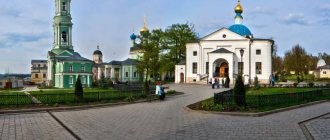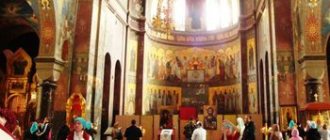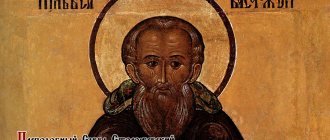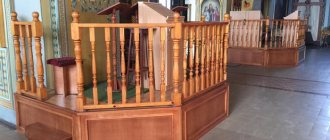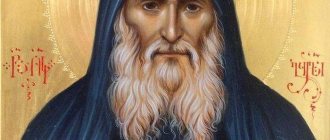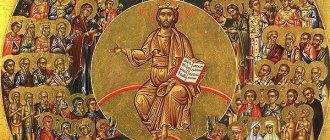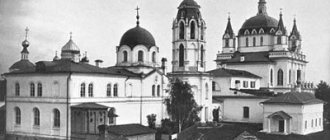A national treasure of Belarus, a place of amazing history and spiritual power, a monastery where the legendary shrine has been kept for many centuries - the Zhirovichi Icon of the Mother of God... The Holy Dormition Zhirovichi Stavropegic Monastery was founded in 1520, has not been closed for centuries and today is the largest Orthodox center of the country.
Zhirovichi Icon of the Mother of God
The history of the spiritual center in the town of Zhirovichi began more than half a thousand years ago with the miracle of the appearance of the icon of the Mother of God . According to legend, this happened in 1470 .
One day, in the forest on the estate of the treasurer of the Grand Duchy of Lithuania, Alexander Soltan, shepherds noticed a bright light breaking through the branches of a wild pear tree. It turned out that it came from a small image of the Virgin and Child . The shepherds took down the image and took it to the owner, but he did not attach any importance to the story, and locked the icon in a casket.
In the evening, Soltan decided to show the find to the guests, but... it was not in the casket. The next day, the shepherds again saw the image of the Mother of God on the same pear tree and brought it to the nobleman. And now the owner accepted the icon with respect, vowing to found a temple at the site of the apparition. So a new church was built for the icon, called Zhirovichi .
Around 1520, there was a fire in the town, during which the wooden church burned down, and the icon was never found in the ashes. Only the church school survived. One day after class, local children wandered onto a hillock and saw the Mother of God in a radiant glow on a large stone, and in her hands - the lost shrine. The children hurried to the village and called the adults, who found a miraculous image on a boulder with a candle lit next to it. This event became the second appearance of the Zhirovichi icon .
The amazing history of the icon and the miracles that began from it made Zhirovichi a place of pilgrimage . Pilgrims began to come here not only from the surrounding area, but also from distant places. And, according to their faith, people received healing from illnesses and spiritual help in difficult circumstances.
In 1730, the solemn coronation of the Zhirovichi Icon of the Mother of God , and at the same time an expensive frame was created.
Today the Zhirovichi icon is widely known both as a miraculous shrine and as a unique artistic, historical and cultural phenomenon. This is the smallest of the revered Mother of God icons - an oval plate of jasper (5.6 by 4.4 cm) with a relief image of the Virgin Mary and the baby Jesus, who gently presses his cheek to the Mother’s face. She is valued by Orthodox believers and Greek Catholics, is the patroness of Belarus and is included in the list of the 100 most significant Orthodox icons in the world .
The icon rarely leaves the monastery : the ministers try not to move it due to its fragile condition. But most importantly, the monks do not want to disturb the joy of meeting the image in the monastery itself. An exact replica, which was made in 1996, is usually used at events.
The day of the appearance of the Zhirovichi Icon of the Mother of God is celebrated on May 20. Every year many pilgrims gather at the monastery for a great celebration.
History of the Zhirovichi monastery
The Zhirovichi Monastery is the largest religious center of the country, a stronghold of the Orthodox faith, which, however, has experienced different times throughout history. It was Orthodox and Uniate, was destroyed and restored, fell into oblivion and came back to life again, but never ceased to function and serve as a haven for believers.
In the 16th century, after a big fire in which the first wooden church burned down and a new appearance of the Zhirovichi icon, a stone church was built on the memorial hillock and an Orthodox monastery .
Josaphat Kuntsevich , became its abbot . And for more than two centuries, the Zhirovichi monastery remained the center of Uniatism in the Grand Duchy of Lithuania.
Already during the time of the Russian Empire - in 1839 - Bishop Joseph Semashko , who was patronized by Nicholas I, along with the priesthood and brethren converted to Orthodoxy, and the monastery was returned to the Orthodox Church.
In 1921-1939, the Grodno province was part of Poland, and an agricultural school was opened in the buildings of the Zhirovichi monastery. At the same time, 10 monks continued to live in the monastery.
The monastery operated both during the harsh years of World War II (and not a single building was damaged by bombing or shelling!), and during the difficult times of atheism. In 1945, theological and pastoral courses were opened here, which soon gave rise to the Minsk Theological Seminary . When the authorities began to hinder the recruitment of applicants, the seminary closed in 1963. In 1989, it began work again thanks to Metropolitan Filaret (Vakhromeev), who was the holy archimandrite of the Zhirovichi monastery from 1975 to 2013.
From 1996 to 2015, the Zhirovichi Monastery also housed the Minsk Theological Academy .
In the early 1960s, the Zhirovichi monastery gave shelter to the sisters of two closed convents - the Nativity of the Mother of God of Grodno and the Polotsk Spaso-Euphrosinievsky monastery.
Since 1992, the Zhirovichi Monastery has the status of stauropegial , is the spiritual center of the Belarusian Exarchate and the largest monastery for men in the country .
In February 2020, the anniversary year of the 550th anniversary of the discovery of the miraculous Zhirovichi icon and the 500th anniversary of the monastery, a book dedicated to them, “The All-Joyful Intercession of White Russia,” . Its author, the abbess of the Grodno Holy Nativity of the Mother of God convent, Abbess Gabriela , collected in her work ancient written sources, legends, and memories of local residents.
It is interesting that the future abbess spent her childhood and youth in Zhirovichi.
Territory
The territory belonging to the monastery is not very large, but cozy. Here you can find a green, peaceful place to relax and listen to the chime of the bells. During a visit to the monastery in Zhirovichi, the monastery refectory and bakery are always open for pilgrims and guests. Here you can have a delicious meal and buy monastery food to take home. The main part is still closed to the public. For example, the Holy Cross and Yavlensky churches can only be visited with a tour, or when a service is taking place.
Architectural ensemble
The Zhirovichi Monastery is the largest architectural ensemble of the 17th–18th centuries and a unique historical monument on the territory of Belarus. This “city within a city” was built over many years, combining elements of different styles - Baroque, Rococo, Classicism. To date, the monastery complex unites 5 churches, a bell tower with a chapel, old and new (1956) seminary buildings, a fraternal building, an economic building and other auxiliary buildings, refectories, houses for pilgrims...
Temples of the Zhirovichi monastery:
- Holy Assumption Cathedral
- St. Nicholas Church (attached to the cathedral)
- Church of the Epiphany (Epiphany)
- Church of the Exaltation of the Cross
- St. George's Church (a wooden church of the 18th century near the old monastery cemetery)
The main temple of the Zhirovichi monastery - the majestic Holy Assumption Cathedral - was built between 1613 and 1650. Its founder was the owner of Zhirovich Kostelyan Ivan Meleshko . Chancellor of the Grand Duchy of Lithuania Lev Sapega also made a great contribution to the construction.
Throughout history, the cathedral has been repaired and rebuilt more than once after destruction. According to sources, the most noticeable changes occurred in 1655, 1760, 1821, 1867. Therefore, it is not surprising that the main temple of the monastery combines elements of Baroque, late classicism, and features of Byzantine (basilica) church architecture. The height of the cathedral is about 40 m, length – 55 m . Inside, it retained the Baroque architectural decoration.
Initially, the temple had only a central iconostasis , which has been well preserved to this day. Its baroque painting was done by master Grigory Medvedsky at the end of the 18th century. Side iconostases appeared here in the 60s. XIX century. The walls of the temple are decorated with paintings from different periods - images of the four evangelists, the faces of the most revered saints, scenes of church holidays.
The main altar of the cathedral is consecrated in honor of the Dormition of the Blessed Virgin Mary, the right chapel is in honor of the Intercession of the Most Holy Theotokos, the left chapel is in honor of the Nativity of the Prophet, Forerunner and Baptist of the Lord John.
In the large basements of the temple in the 17th–18th centuries there was a tomb for monks and noble people of the area. At the beginning of the 19th century it was walled up, and the deceased began to be buried in a common cemetery.
The St. Nicholas Church attached to it has a common entrance with the cathedral - a stone church reminiscent of the early Christian one. It is here that the Zhirovichi Icon is kept during the cold season.
The Church of the Nativity of the Mother of God, today known as Yavlenskaya , was erected around 1672 on the site where, according to legend, the second apparition of the Zhirovichi icon of 1520 took place. And the stone on which the children saw the Mother of God was placed in the altar under the throne. In 1796 the temple was completely rebuilt.
The chronicle of the monastery tells another amazing story of this church, associated with the appearance of the icon already in the twentieth century. During the Great Patriotic War, the Nazis set up an ammunition depot in the church, and at night the sentries began to see a Woman here who ordered to leave the monastery and mysteriously disappeared. The Germans considered her a partisan and accused the archimandrite of concealment, but when they conducted a search, they saw the icon of the Mother of God and recognized a stranger in her face. After this, to the surprise of the monks and local residents, the Nazis left the monastery and never returned during the entire occupation.
The stone one-nave Church of the Exaltation of the Cross was built in 1769 and is unique for Belarus. This is a calvarium temple dedicated to the rite-symbol of pilgrimage to Jerusalem, widespread in the 18th century. Most of the building inside is occupied by a staircase - a copy of the legendary Holy Staircase (Scala Santa), which leads to the papal chapel of the Holy of Holies in the Lateran Palace in Rome. And the Zhirovichi temple is the only one in the world with such a solution: as in Rome, local pilgrims can climb the 28 steps of the stairs on their knees, accompanying the path with special prayers.
St. George's Church (St. George the Victorious) - a wooden church in the Baroque style of the late 18th century - is removed from the monastery courtyard and is located on the outskirts of Zhirovichi near an ancient cemetery. This place has long been called “Yuryevskaya Gorka”, and from here a stunning view of the monastery ensemble opens up.
Another iconic building and symbol of the monastery is the bell tower in the style of late classicism. It is located across the road opposite the Holy Assumption Cathedral on the same axis with it and follows its outline. The first tier is a chapel with columns, the second is a domed belfry. The bell tower appeared in Zhirovichi in 1828 during the time of Bishop Semashko and the establishment of the first Theological Seminary, thanks to which a decade later the monastery again became Orthodox after a two-century Uniate period.
For the last 30 years, restoration work has been carried out at the Zhirovichi Monastery, and the infrastructure for guests of the monastery has been improved. In addition, for the half-century anniversary, new objects appeared here: a refectory and a hotel were built in the style of outbuildings of the 18th–19th centuries.
Architecture
The monastery complex has an irregular layout, a picturesque volumetric-spatial composition and an expressive silhouette. The core of the ensemble is the Assumption Cathedral, connected by covered passages to the seminary building and a residential building, on the ground floor of which there is an arched passage to the territory of the monastery. The seminary building forms the front courtyard in front of the apse of the cathedral. In the southeast of the cathedral is the Church of Yavlenskaya. In the eastern part of the monastery, on the highest place, the Church of the Exaltation of the Cross was built - the vertical dominant of the ensemble.
Shrines of the monastery
The Holy Assumption Cathedral houses the main shrine of the monastery - the icon of Our Lady of Zhirovichi . Interestingly, during the winter, the image is transferred to the neighboring St. Nicholas Church, where it is warmer during the cold season.
The most famous holy springs in Belarus are located in the Zhirovichi monastery :
- Holy spring under the Holy Assumption Cathedral
- Far Holy Spring of the Mother of God
- Near Holy Spring
According to legend, the first key appeared in 1470 at the foot of a pear tree along with the appearance of the icon of the Mother of God. Soon a temple was built here, and today this ancient source is located under the Holy Assumption Cathedral .
Two more springs spring up far from the cathedral, but they are also connected to the first source. The water from the Zhirovichi springs is unique and, as people believe, helps with many ailments.
The famous Far (old) spring - two kilometers from the monastery - was consecrated more than 200 years ago and is known for its special healing properties. A bathhouse has been built for pilgrims from different countries for many decades. In 2019, reconstruction was carried out, and the source was reopened to believers.
The nearby spring , consecrated in 2006 in the name of the Mother of God, is located on the road to Ivatsevichi. There are two baths here: men's and women's.
Until the middle of the 19th century, the famous “Zhirovichi Gospel” was kept in the monastery - a handwritten monument of the 15th century, created on 404 pages in a statutory letter with beautiful miniatures and headpieces, initials. In it, Chancellor Lev Sapega made a personal inscription about the donation of lands to the monastery, which gave it a second name - “The Gospel of Sapega”. Now the spiritual artifact is kept in the Library of the Lithuanian Academy of Sciences.
Zhirovichi Monastery today
Hieroarchimandrite, Rector of the Zhirovichi Holy Dormition Monastery - Metropolitan Pavel of Minsk and Zaslavsky, Patriarchal Exarch of All Belarus
The abbot of the Zhirovichi monastery and the rector of the Minsk Theological Seminary is Archbishop Gury of Novogrudok and Slonim
There are 33 monastic brethren in the monastery today.
In Zhirovichi there is a higher theological educational institution of the Belarusian Orthodox Church - the Minsk Theological Seminary named after the Ecumenical Teachers and Saints Basil the Great, Gregory the Theologian and John Chrysostom. Here they train clergy, theologians, teachers, and church workers for service in parishes, diocesan and synodal institutions, religious educational institutions, foreign missions, and other church and secular organizations.
Also at the monastery there is a rehabilitation center for alcohol and drug addicts “Anastasis” (Sosnovka village, Slonim district).
All year round, the Zhirovichi monastery welcomes pilgrims , who can stay in houses for the night (men and women separately). Those who wish to spend several days here are included in monastic obediences - prayers, divine services, work for the benefit of the monastery.
For those who come for the day, excursions are held from 9.00 to 16.00. Pilgrims can get acquainted with the history of the discovery of the miraculous image of the Mother of God of Zhirovichi, the past and present of the monastery, and the shrines of the monastery. The program includes visits to 4 churches, a monastery cemetery, and the Minsk Theological Seminary.
Another interesting route is the courtyard of the Zhirovichi Monastery , located on the site where Soltan’s beautiful estate was once located: unfortunately, in our time only ruins remain from the buildings. These lands, together with the ancient apple orchard, were transferred to the monastery. Residents and local residents not only revived the garden, but also founded a courtyard where guests can come. There is a herd of horses and a herd of artiodactyls, a poultry farm, a pig farm, and a fishery. In addition, the inhabitants created their own “Garden of Eden” , where you can see different types of wild animals.
Holy Assumption Cathedral
It was built in 1613 and is considered the main church of the monastery in Zhirovichi. Funds for its construction were allocated by Ivan Meleshko, who at that time was the owner of Zhirovichi. The interior decoration was carried out with the money of Lev Sapieha, he held the position of Chancellor of the Principality of Lithuania. The height of the cathedral is 40 and the length is 55 meters. Previously, under the building there was a fraternal burial vault and burial places of noble persons. In the 18th century, the tomb was walled up. In the center of the iconostasis there is an icon of the “Savior Almighty” in a silver frame. The walls have preserved paintings from all times. On weekends, this cathedral holds: on Saturday from 06:00 am - early Divine Liturgy, from 18:00 evening Divine service. And on Sundays and on holidays two liturgies are served - 06:30 and 09:30.
Museum of Minsk Theological Seminary
The Church and Archaeological Museum of the Minsk Theological Seminary was founded in 2014 on the initiative of the rector, Archbishop Guria. Every year his collection expands and is replenished with unique rarities. Many of them have not yet been studied enough, so visitors can expect interesting new facts and discoveries.
The museum has 5 halls , the exhibition of which is dedicated to history:
- Zhirovichi Monastery,
- Minsk Theological Seminary,
- spiritual education and enlightenment in the Belarusian lands,
- church art,
- church books.
Holy Cross Church
At the beginning of the 18th century, one of the parishioners of the Zhirovichi monastery - a certain Eleonora Golovishchina - brought a gift of 8 thousand gold pieces for the construction of the Church of the Passion of Christ so that later funeral services would be held there. Construction was completed in 1769.
This is a calvarium temple, which is dedicated to the rite of pilgrimage to Jerusalem. The staircase in the temple occupies half of the room. It is a complete copy of the one by which they led Jesus Christ to the unrighteous trial.
Celebrations in honor of the 550th anniversary of the Zhirovichi icon and the 500th anniversary of the monastery
In 2021, Belarus celebrates the 550th anniversary of the discovery of the miraculous Zhirovichi Icon of the Mother of God and the 500th anniversary of the founding of the Holy Dormition Zhirovichi Stauropegial Monastery.
The main celebrations were to take place on May 19 and 20 - the day of the appearance of the Zhirovichi Icon of the Mother of God. However, due to the epidemiological situation, it was decided to postpone the commemorative anniversary events to a later date.
At the entrance to the monastery, a monument will open - a 4-meter bronze figure of the Venerable Martyr Seraphim of Zhirovichi . An ascetic of the faith, missionary and preacher, thanks to whom 74 churches were opened during the Soviet years, he was deported to a concentration camp, where he suffered martyrdom. At the end of the twentieth century, Seraphim Zhirovichsky was canonized among the holy martyrs of the Belarusian land.
From May to August 2021, an exhibition of icons from the collections of the Slonim Regional Museum of Local Lore named after I.I. will be on display. Stabrovsky. During the holidays, Zhirovichi will host an exhibition of rare and homemade books “Dakranutsa da sukhounastsi”, as well as an exhibition and sale of folk art products, and master classes by folk craftsmen. The agricultural town will also host the V Open Festival “Zhyrovitsky Fest”.
A series of events dedicated to the 500-year historical path of the Zhirovichi monastery are planned in the dioceses of the BOC in 2021. Conferences will be held with the participation of lecturers from the theological academy and seminary, exhibitions, round tables, literary readings, and festivals.
An international conference is planned jointly with the National Academy of Sciences of Belarus. In November 2021, a traditional seminar for Belarusian university students will be held at the Minsk Theological Seminary in Zhirovichi, and this year’s theme is dedicated to anniversaries.
Abbots, governors
- Nicholas (Redutto) (1852 - 1882)
- Stefan (Kistrussky) (October 25, 1897 - November 12, 1901)
- Afanasy (Sambikin) (February 15, 1902 - April 22, 1904)
- Misail (Krylov) (April 29, 1904 - December 24, 1905)
- Feofilakt (Klementyev) (August 23, 1907 - April 24, 1911)
- Tikhon (Sharapov) (1922 - 1924)
- Dimitry (Magan) (1935 - 1941)
- Venedikt (Bobkovsky) (1941 - 1942), archimandrite.
- Seraphim (Kudryavtsev) (1942 - 1943), archimandrite.
- Bogolep (Antsukh) (1943 - 1947)
- Mitrofan (Gutovsky) (1947 - 1953)
- Leonty (Bondar) (July 1953 - 1956)
- Anthony (Melnikov) (1956 - 1963)
- Mikhei (Kharkharov) (1963 - 1969)
- Konstantin (Khomich) (1970 - 1987)
- Stefan (Korzun) (1987 - 1990)
- Gury (Apalko) (from March 6, 1990)
